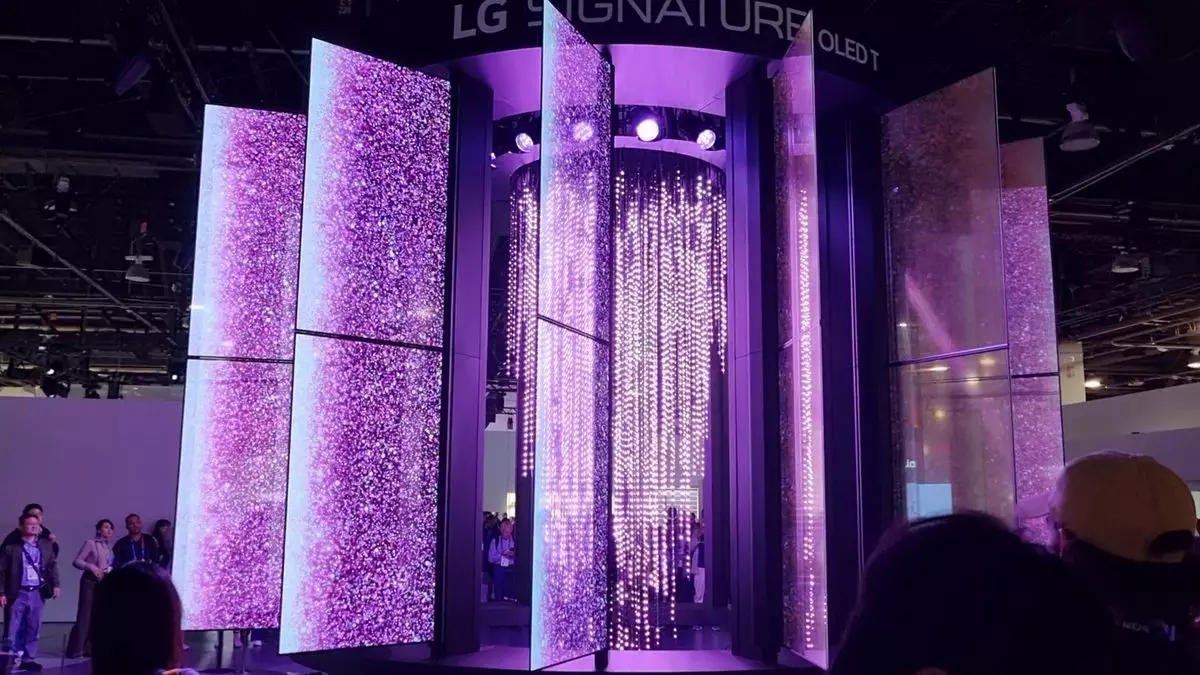In recent years, the concept of transparent displays has captivated the technology world, prompting both intrigue and skepticism among consumers and industry experts alike. The allure of a screen that allows light to pass through while still presenting captivating visuals often feels like science fiction brought to life. However, beneath the surface of this innovative approach lies a complex landscape of functionality, practicality, and aesthetic appeal that may not be as glowing as it first appears. At CES 2025, where cutting-edge technology is on full display, these questions took center stage, particularly through the lens of one extravagant technology: the transparent display.
During a visit to CES 2025 at the sprawling Las Vegas Convention Center, I encountered a transparent TV display created by LG that stopped me in my tracks. Despite my previous assertions declaring such technology a gimmick more suited for trade show presentations than personal use, the sheer visual impact of this display was undeniable. To witness seven 77-inch LG signature OLED T displays elegantly arranged, rotating in harmony around a chandelier, was nothing short of impressive and captivating. It invoked a sense of awe that temporarily overshadowed any reservations I might have held regarding its practicality for everyday consumers.
Yet, while the visual spectacle held me captive, unsettling thoughts crept in. Transparent displays, regardless of their aesthetic charm, bear a hefty price tag—around $60,000 for this particular model. This raises the recurring question: How does one justify spending such a sum for a technology that often feels more theatrical than practical?
Indeed, the financial demand of transparent displays invites skepticism. At such exorbitant prices, one might wonder if the experience they provide can truly measure up to their cost. Transparent technology may arouse curiosity and encourage engagement at trade shows, but in everyday settings, its utility wanes significantly. Prevalent among tech firms’ marketing strategies is the tantalizing goal of creating deeper consumer connections. Still, this pursuit often translates into products that prioritize aesthetics over practicality.
The LG transparent TV serves as a reminder of the ongoing dance between advancement and practicality in the realm of consumer electronics. The initial “wow factor” can easily blind us to deeper concerns regarding utility, durability, and value for money. As enticing as the future of transparent displays might be, we must ask ourselves if we genuinely need such technology in our homes.
Interestingly, my journey in search of captivating technology did not end with the transparent display. The fairgrounds of CES 2025 introduced me to the TCL X11H Max, a groundbreaking 163-inch Micro LED display that boasted unprecedented features—a nanosecond response time and an astounding brightness of 10,000 nits. While the transparent display lured me in with its visually striking presence, the performance potential of TCL’s offering sparked my imagination. The thought of immersing myself in high-octane video games like Forza Horizon 5 or experiencing the tension of a horror flick was utterly tantalizing.
However, the price point of the TCL X11H Max also invoked a jolt—a staggering $110,000. This stark realization serves only to accentuate the restrictive nature of such high-end technology—impressive, yes, but practically out of reach for the average consumer.
A Reflection on Tech Trends
My experience at CES 2025 brought to light as many questions as it did answers. As I reflected on the transparent displays and their competitors, it became clear that the world of technology is often characterized by illusions. While captivating innovations can transform our aesthetic and functional expectations, it is essential to scrutinize their true value and viability in real-world applications.
To wrap up, the tech industry offers a whirlwind of exquisite designs and futuristic ideas; however, it’s crucial to contemplate whether these innovations are functional or simply flashy distractions. As we navigate through the sea of captivating screens and elaborate displays, consumers should maintain a vigilant mindset, evaluating both the excitement and the practicality of these technologies. After all, the allure of transparent displays won’t detract from the reality that, sometimes, true innovation goes beyond mere aesthetics.

